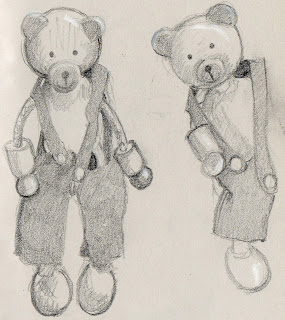In case you should be wondering what happened to my self-imposed assignments (I know you are not wondering at all, but let me dream a bit) - I am paused. I admit I have a particularly uninspiring one (collage, hugh!) sitting on my easel since three weeks. In almost exactly one week the semester starts, so I think I will just enjoy another week pause before diving into that kind of hectic....which is of course orders of magnitude above any kind of self-imposed regimen. I am not totally idle, though. I have moved forward with my figure self-study, and I am now fully into anatomy...which is not half as bad as it sounds! I am using several different sources, some of them pretty unusual for artists, so I thought I would share my choice of study books.
My first stop is Bridgman’s “Drawing from life”. At the beginning I thought this book was plain ugly, but now I really appreciate the amount of detail he goes into in explaining every single portion of the body, at rest, from various angles and in movement. There must be at least 100 pages only on the arms! The sketches are really essential and therefore very fast to copy (which is the only way to learn anatomy in my eyes, really).
Loomis’ “Figure Drawing” is much more essential but has some really nice schemes - and the drawings are much clearer than Bridgman’s at times.
Burne Hogart’s books (“Dynamic Anatomy” and “Dynamic Figure Drawing”) are a world on itself. You cannot really use them in alignment with the other approaches, but I find they complement the other two authors by offering a different perspective and process. I am not using them a lot at the moment, but I know I will go back to them again and again when it comes to real world challenges.
An essential aid for me is not a book but an App - the incredibly wonderful VisibleBody app for the iPad2. It allows you to view the skeleton and each single muscle from any angle, highlight it, name it, remove it, put it back again, see how it attaches to the bones, etc, etc, etc.... It is designed for medical doctors and students of medicine, not for artists, but I find it invaluable in really understanding what sentences like “The biceps long head extends from the glenoid cavity (under acromion) through a groove in head of humerus, the short head from the coracoid process to the radius” actually mean. I cannot recommend it enough, it is worth every cent of the 30 dollars price tag.





















